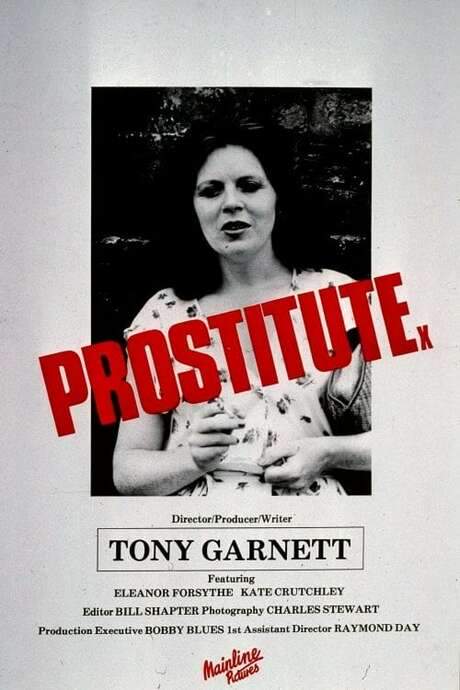
The Best House in London
Year: 1969
Runtime: 97 mins
Language: English
Director: Philip Saville
In Victorian London, the British Government launches an ambitious scheme to curb prostitution by creating an opulent establishment dubbed the ‘best place in town.’ The plan results in the world’s most extravagant brothel, a lavish venue where decadence and social experiment collide.
Warning: spoilers below!
Haven’t seen The Best House in London yet? This summary contains major spoilers. Bookmark the page, watch the movie, and come back for the full breakdown. If you're ready, scroll on and relive the story!
The Best House in London (1969) – Full Plot Summary & Ending Explained
Read the complete plot breakdown of The Best House in London (1969), including all key story events, major twists, and the ending explained in detail. Discover what really happened—and what it all means.
Victorian London hums with a strange mix of opulence and underlying tension as Sir Francis Leybourne [George Sanders] stands at the center of a shifting power play. A married aristocrat, land baron, and businessman with far‑reaching interests, he maintains a kept woman, Babette [Dany Robin], who also shares a complicated bond with his estranged son, Walter Leybourne, played by Benjamin Oakes / Walter Leybourne [David Hemmings]. This tangled personal web sets the stage for a public scheme that could rewrite the city’s social order.
Sir Francis is approached by a minister to pilot a bold new experiment—London’s first bordello. The goal is to acknowledge the hidden role of prostitutes in aristocratic society while steering them off the streets and into a controlled, French‑inspired establishment. The plan places Sir Francis at the helm, with the house to be run as a project that would bridge private desire and public reform, a dichotomy that tempts and unsettles everyone involved.
Into this volatile mix steps Josephine Pacefoot [Joanna Pettet], the orphaned niece who leads the League of Social Purity, a reformist movement intent on empowering streetwalkers with skills to escape prostitution. She has allied with Benjamin Oakes [David Hemmings], a publicist by trade, whose current assignment to promote Italian Count Pandolfo’s dirigible becomes a public relations backdrop for their work. Benjamin reveals a deeply personal thread—he is a bastard, the child of a former servant, and the birthmark on his wrist is a quiet, stubborn clue to his uncertain parentage. His partnership with Josephine is more than professional: it’s a chance to publicly chart a humane path for vulnerable women, even as his own past complicates every step of their campaign.
Count Pandolfo [Warren Mitchell] appears as a foaming engine of modern spectacle, building an airship that seems to symbolize progress itself. With Pandolfo in the wings, the pair launches a public push to reshape perceptions of mobility, technology, and class. The story threads through a cast of vivid figures—Sherlock Holmes [Peter Jeffrey] and Doctor Watson [Thorley Walters] lend their sharp wit and observational prowess to the backdrop of political and social maneuvering, while Lily [Veronica Carlson] and other colorful personalities populate the fringes of this high‑stakes drama.
When Sir Francis unexpectedly dies, the will reveals a shocking twist: he has left his entire estate—Belgravia Hall and, crucially, the future of the bordello—to Josephine Pacefoot. Babette, who was to set up the house in his absence, discovers she may be eclipsed by the young reformer’s control over the property. Walter, aided by Babette, makes a concerted effort to claim Belgravia Hall and run the bordello as envisioned, pushing Josephine into a corner she never anticipated. Josephine, in her innocence, imagines the hall as a sanctuary to advance her League’s mission, not as a potential revenue stream for a private establishment.
The conspiracy thickens as the political and criminal undercurrents weave through the narrative. The Home Secretary [John Bird], a press‑savvy editor of The Times [Maurice Denham], and a roguish mix of henchmen and informants—Milton Reid as a henchman and Margaret Nolan as a Busty Prostitute—all move chess pieces on a city map where power, propriety, and principle collide. Inspector MacPherson [Bill Fraser], Lord Tennyson [Hugh Burden], and Lady Dilke [Jan Holden] add layers of intrigue and authority, while the theater and social world mingle in and around a world where a music hall singer [Tessie O’Shea], a host of colorful characters, and a reluctant reform movement brush shoulders with the men who pull the levers of influence.
As the plan unfolds, the bordello becomes not just a business venture but a battleground for ideas about sex, class, reform, and independence. The project tests the boundaries between virtue and vice, between the social purity sought by Josephine and the practical, sometimes morally ambiguous maneuvers of those who think they know what London needs. The cast—ranging from the celebrated stage faces to the sharp-eyed victorians who populate Sir Francis’s glittering world—gives the story texture and texture to the moral questions at its heart.
Throughout the narrative, the characters grapple with loyalty, scandal, and the costs of reform. Flora [Carol Friday] and Flora’s mother [Avril Angers], along with Evelyn [Penny Spencer] and a host of other figures, inhabit the margins of this dramatic experiment, offering humanity, humor, and vulnerability to a plan that could either modernize society or unbalance it beyond repair. The tension between public duty and private desire drives the action, as each player—whether a clever publicist, a noble patron, a sharp‑witted detective, or a compassionate reformer—contributes to a story that asks whether London can accommodate both progress and propriety without losing its soul.
In the end, the fate of Belgravia Hall, the bordello, and the lives entwined around them remains a delicate negotiation between ambition and ethics, between reform and desire, a reflection of a city itself at the crossroads of tradition and change. The film shirts its political and social questions in wit, drama, and a richly drawn ensemble, reminding us that every calculated move in a city of splendor and shadow ripples through the lives of those who inhabit it.
Last Updated: October 09, 2025 at 11:26
Unlock the Full Story of The Best House in London
Don't stop at just watching — explore The Best House in London in full detail. From the complete plot summary and scene-by-scene timeline to character breakdowns, thematic analysis, and a deep dive into the ending — every page helps you truly understand what The Best House in London is all about. Plus, discover what's next after the movie.
The Best House in London Timeline
Track the full timeline of The Best House in London with every major event arranged chronologically. Perfect for decoding non-linear storytelling, flashbacks, or parallel narratives with a clear scene-by-scene breakdown.

Similar Movies to The Best House in London
Discover movies like The Best House in London that share similar genres, themes, and storytelling elements. Whether you’re drawn to the atmosphere, character arcs, or plot structure, these curated recommendations will help you explore more films you’ll love.
Explore More About Movie The Best House in London
The Best House in London (1969) Scene-by-Scene Movie Timeline
The Best House in London (1969) Movie Characters, Themes & Settings
The Best House in London (1969) Spoiler-Free Summary & Key Flow
Movies Like The Best House in London – Similar Titles You’ll Enjoy
House of Pleasures (2011) Full Movie Breakdown
Guest House (2020) Full Summary & Key Details
House of Love (2000) Full Summary & Key Details
Club Le Monde (2002) Movie Recap & Themes
The Gigolos (2006) Film Overview & Timeline
Prostitute (1980) Film Overview & Timeline
Personal Services (1987) Full Movie Breakdown
The House of the Lost Dolls (1974) Plot Summary & Ending Explained
The Best (1976) Full Summary & Key Details
Ladies Who Do (1963) Full Summary & Key Details
A Man with a Maid (1975) Complete Plot Breakdown
No Sex Please: We’re British (1973) Full Movie Breakdown
School for Sex (1969) Full Movie Breakdown
London Suite (1996) Story Summary & Characters
A House Is Not a Home (1964) Full Summary & Key Details

















